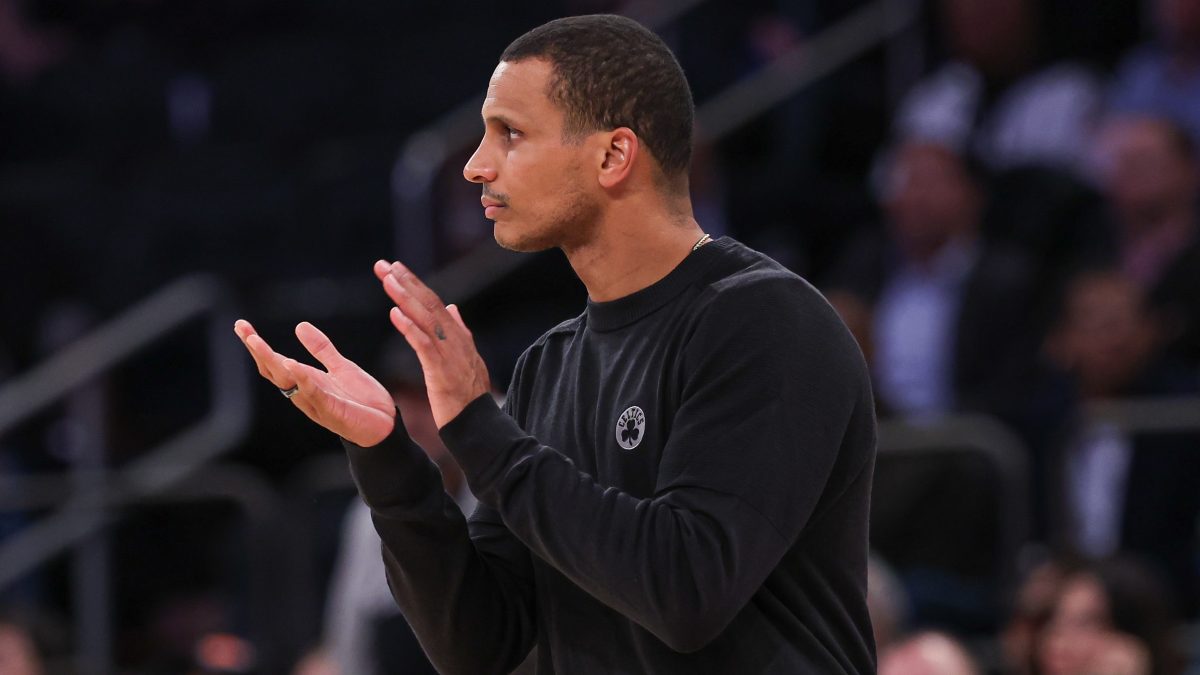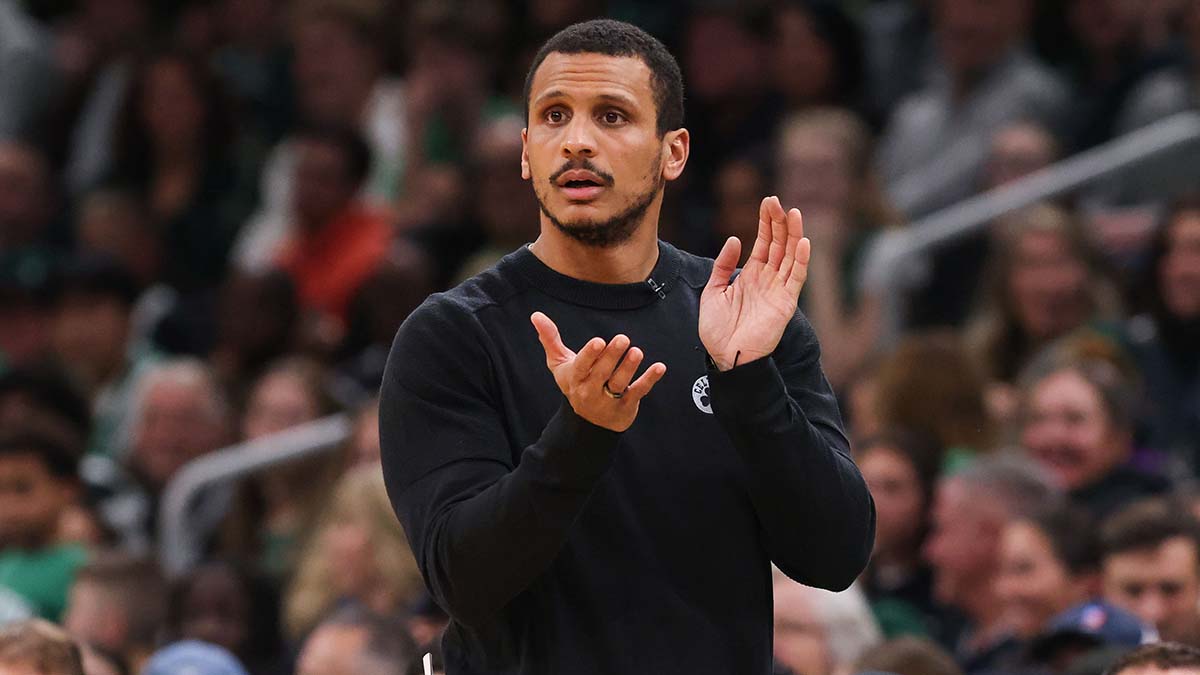Forsberg: What's wrong with Tatum's shot, and can fixing it save the C's? originally appeared on NBC Sports Boston
Jayson Tatum is in an improbably bad 3-point shooting funk. The Celtics cannot shun their roller coaster ways. Sometimes these two things feel impossibly intertwined.
Tatum made 39.6 percent of his 3-pointers over his first four NBA seasons. This year, his 3-point percentage has plummeted to 31.7 percent. Tatum’s 3-point woes are further accentuated on a team thin on shooting and prone to maddening offensive lulls.
Get Boston local news, weather forecasts, lifestyle and entertainment stories to your inbox. Sign up for NBC Boston’s newsletters.
What’s more, Tatum is shooting 10 percent on crunch-time 3s this season and 34.2 percent on all fourth-quarter triples. That’s down from 34.8 percent in clutch last season and 47.9 percent in the fourth quarter.
There’s an alternate universe where Tatum shoots closer to his career marks -- or even just league average -- and some of Boston’s offensive woes are eased.
Celtics-Hornets takeaways: Off night for the Jays costs C's
NBC Sports
Celtics coach Ime Udoka maintains that Tatum is getting good looks, maybe even better than a year ago. The numbers back up his assertion.
Last season, 24.7 percent of Tatum’s shots were deemed open-or-better 3s (4-plus feet of space from nearest defender) and he made 40.1 percent of those shots (133 of 325 overall). What’s more, Tatum made 52.4 percent of all wide open 3s with 6-plus feet of space.
This season? He’s shooting 33.1 percent on all 3s with 4-plus feet of space (78 of 236 overall), including a baffling 31 percent on all wide open 3s.
A closer look at his shot quality based on nearest defender, per the NBA’s tracking data:
All sorts of theories abound on Tatum’s shooting woes. Did he put on too much muscle this offseason? Is his shot flatter this year? Casual tape review doesn’t suggest any glaring changes to his form. Is he taking worse shots? Data suggests virtually no change in his corner/non-corner splits and he’s actually taking more catch-and-shoot 3s versus pull-up than a year ago.
The one area we’re left pondering: Is a heightened workload, combined with a relentless grind over the past three years, conspiring against Tatum?
From the condensed pandemic schedule to multiple trips overseas with USA Basketball and now a notable spike in his minutes this season, there are a lot of miles on Tatum’s tires recently. Boston is 4-9 in Tatum's highest-minutes games this season, including seven losses by five points or less.
Celtics president of basketball operations Brad Stevens said Thursday he’s not concerned about Tatum’s shooting woes. He takes solace in the fact that Boston, as a whole, is shooting the 3-pointer better recently and wonders what the team is capable of if and when Tatum finds his shot.
Stevens has long been a "water finds its level" kinda guy. Which is why we thought it was interesting that Stevens invoked Boston’s point differential during his weekly radio address. Despite his team's roller coaster ways, the Celtics own the 12th-best point differential in the NBA at plus-1.7. The three teams directly in front of them are all East rivals: Chicago (+2.5), Brooklyn (+2.9), Philadelphia (+3.1).
What’s maybe more interesting is that, per Cleaning the Glass data, Boston’s expected wins (25.6) to this point is essentially three games higher than its actual total. That projection is almost identical to Brooklyn (25.9) and Philadelphia (26.2), and actually ahead of East-leading Chicago (24.8).
Boston’s minus-2.6 win differential is the fourth worst mark in the league (tied with Minnesota).
Now, the Celtics still would only sit sixth in the East based on projected wins. They’re still not trending towards a legitimate contender, which is why the team started positioning itself to dip below the luxury tax with this week’s Juancho Hernangomez deal. But it’s clear that Stevens and Co. are crossing their fingers on numbers normalizing this season.
Stevens explains Celtics' thinking behind three-team trade
If a trajectory-altering deal doesn't emerge before February’s trade deadline, it’s our guess the Celtics will try to make the minor tweaks suggested in our middle-of-the-road path examination with hopes that a less flawed roster, a better-shooting Tatum, and more time together for the core of this team will push the Celtics closer to being in the second cut of East contenders in the second half of the 2021-22 season.
Is that the best path? We can debate the merits of embracing a bridge year and the benefit of a potential lottery pick but we also understand not wanting to punt on any season in which Tatum and Jaylen Brown are healthy.
Stevens’ stock line when asked about the team’s biggest need ahead of the trade deadline has been that all moves will be weighed based on what shuffles the team closer to title contention. It's pretty obvious that, in the short term, the Celtics need more shooting to further accentuate the talent of Tatum and Brown, and adding a cheap-but-serviceable big wouldn’t hurt either.
Those clamoring for a bigger splash might be disappointed if Boston focuses on depth options and staying under the tax. Stevens has prioritized flexibility since taking over for Danny Ainge and seems OK with living with some of the bumps in the road that might come with it.
But the most impactful trade for this year’s team might simply be Tatum swapping his broken 3-pointer for an older model.




